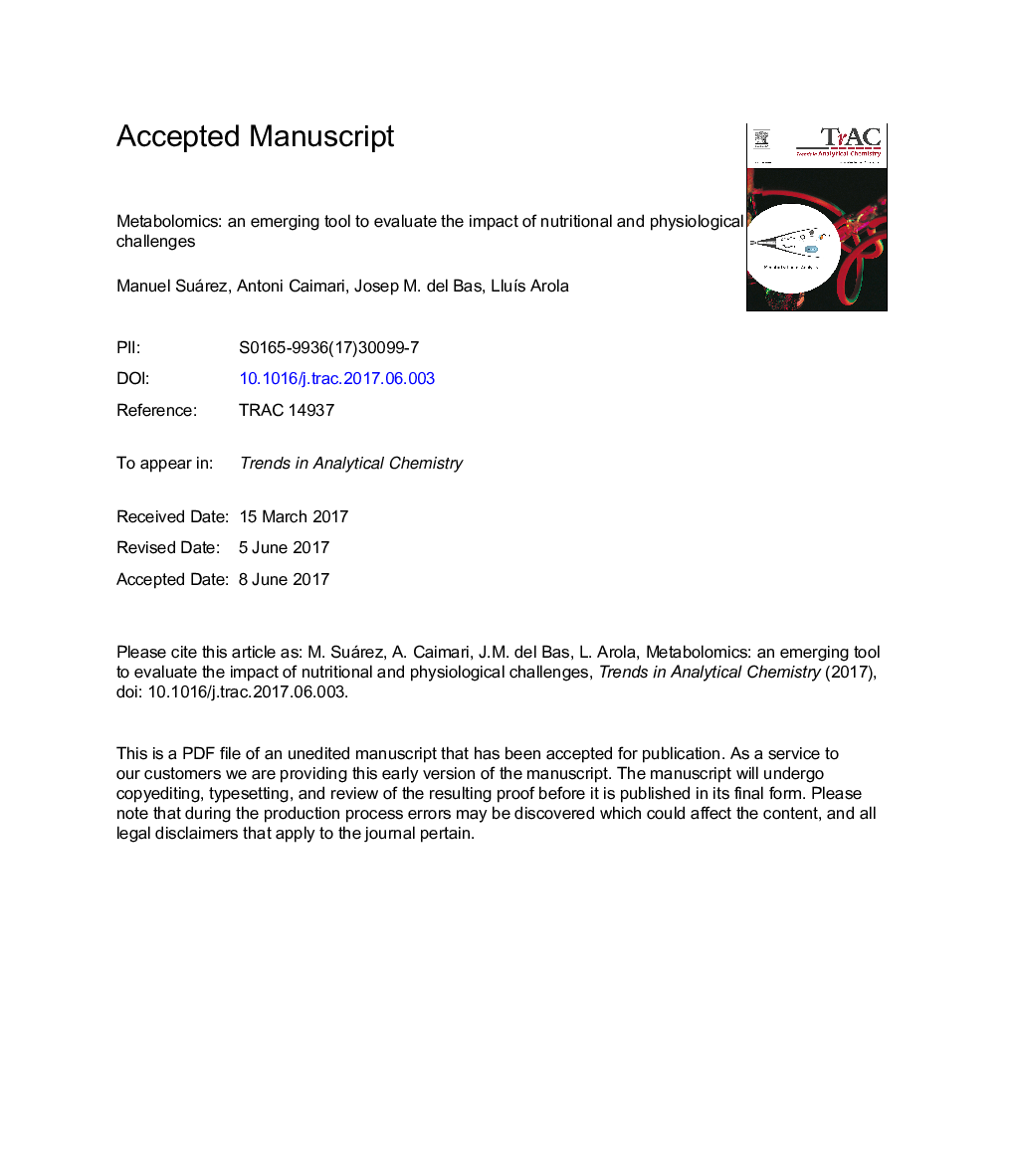| Article ID | Journal | Published Year | Pages | File Type |
|---|---|---|---|---|
| 7688157 | TrAC Trends in Analytical Chemistry | 2017 | 30 Pages |
Abstract
The ability of the metabolism to react to internal and external factors allows live beings to maintain homoeostasis. However, there is still lack of information about the mechanisms and pathways involved in its maintenance. Recently, metabolomics technologies have emerged as a promising tool to characterize metabotypes and to monitor their fluctuations in response to different challenges. Thus, samples from human sources such as plasma and urine have been analysed by both targeted and non-targeted metabolomic approaches after submitting the volunteers to different challenges meant to generate disturbances in the metabolome. In this manuscript, a collection of studies conducted in humans to evaluate the impact of nutrition, physical exercise and circadian rhythms on the metabolome are reviewed. From them, it can be stated that there is great potential for metabolomics as a useful tool to generate hypotheses and define new biomarkers and characteristic metabotypes associated with the health status.
Keywords
Branched amino acidsSCNPBMCsTCAEVOOLC–MS/MSPhenotypic FlexibilityTAGsBCAAcardiovascular diseaseTriacylglyceridesNutritionCVDExtra virgin olive oilMediterranean dietCircadian rhythmsperipheral mononuclear cellsMetabolic syndromeMetabolomicsMETSphysical exerciseSuprachiasmatic nucleusChallengetricarboxylic acid cycle
Related Topics
Physical Sciences and Engineering
Chemistry
Analytical Chemistry
Authors
Manuel Suárez, Antoni Caimari, Josep M. del Bas, LluÃs Arola,
